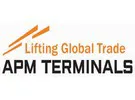APM Terminals is rolling out Navis N4 to all of its terminals globally, with the goal of having one standardised TOS by the end of 2021. “Adopting a standardised TOS globally brings numerous long-term advantages,” says Patrick Heilig, responsible for the global TOS implementation team.
“For example, it enables the sharing of best practises for improved efficiency; the development of in-house expertise that understands our customers and our business; centralised monitoring and support; and faster, cost-effective global development of front-end applications for customers.”
In-house implementation team
Having its own in-house TOS implementation team is unique in the industry, allowing learnings from each implementation to be passed onto the next. For example, the migration from a Navis Legacy system to N4 at APM Terminals Port Elizabeth in August last year, benefited from a previous project with the Port of Tanjung Pelepas (PTP) in Malaysia.
“As this is a joint venture terminal, we were able to learn from PTP and put clear service level agreements into place to mitigate risk,” says Heilig. “We also established clear processes to communicate transparently about the project.” The outcome was that the implementation at APM Terminals Port Elizabeth was one of the company’s most successful yet.
Remote working
When COVID-19 hit, the team evaluated upcoming projects and identified one that was business critical – a modernization project at the company’s Los Angeles terminal. Due to travel restrictions, lockdowns, and physical distancing restrictions, the team had no alternative but to go ahead and reinvent processes based on 100% remote working.
24-hour support
“The team had become comfortable with face-to-face communications and having the global team on site also puts the local team at ease,” explains Mr Heilig. “Working remotely however, we realised that we could actually offer improved service and continuity. Because our global TOS team are located around the world in different time zones, we could offer support 24 hours per day. The team also had more working hours available as there was no time spent travelling to the location and adapting to local time zones. This also contributes to a significant cost saving.”
The lack of face-to-face communication also focused the team’s communication efforts – something that according to Heilig is, “just as important as the project management and technical implementation. Managing the expectations of stakeholders is half the battle.”
Version upgrades ideal candidate for remote implementation
Learnings from this experience will be applied to upcoming projects, including major version upgrades across the company’s portfolio and transitioning from Argos to Navis in the company’s Spanish terminals. “Major version upgrades are a great candidate for remote implementation as it requires a small amount of reconfiguration and limited training,” says Heilig.
“For the Spanish terminals a much bigger transition is involved requiring extensive training. But we’re now confident that there are large parts of the project that will now be implemented remotely.”
 For more information:
For more information:
Patrick Heilig
APM Terminals
Email: Patrick.Heilig@apmterminals.com
www.apmterminals.com
